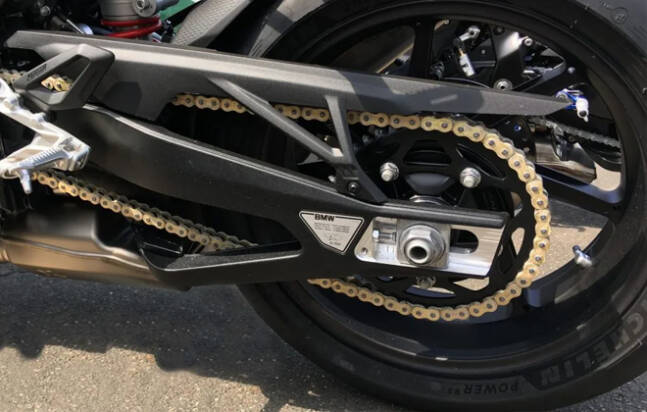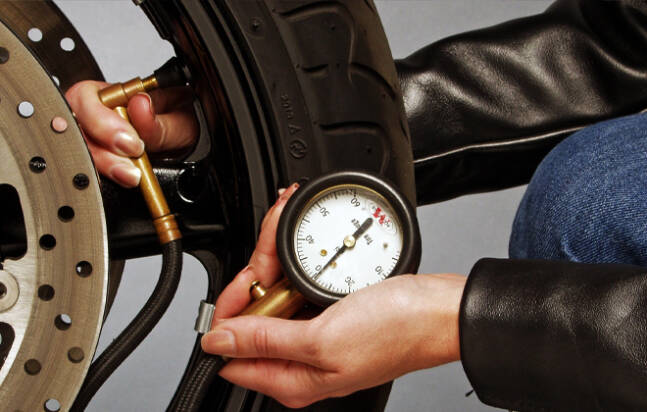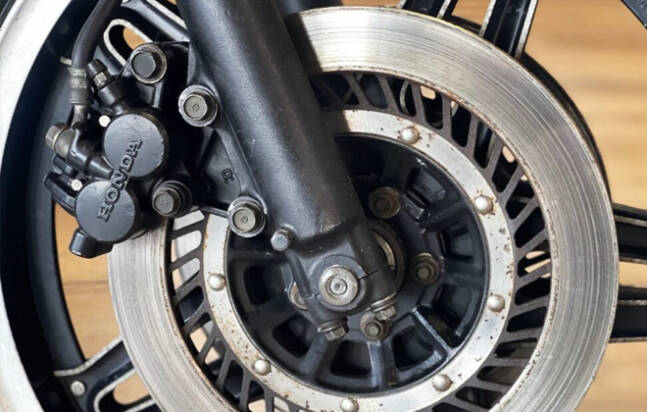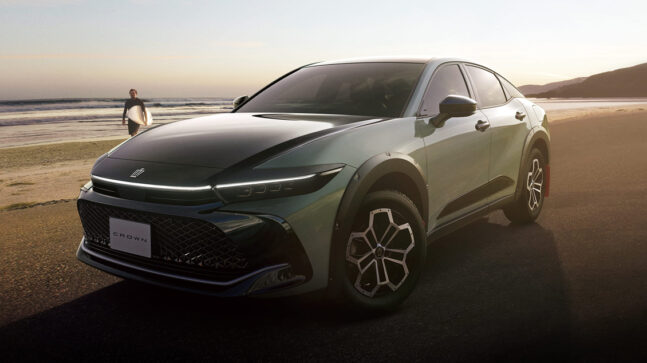In the movies, motorcycle riding is effortless. The calm, cool, collected protagonist in his slick, greasy biker getup saunters outside whatever building he’s in—a bar, a single-story rancher, a trailer—walks over to his Hawg and pops his helmet on.
Whisking the hair out of his eyes, he leans over the bike, both hands on the bars, and kicks it over. It fires off (first kick, of course).
Our Cool Hand Luke glides into the saddle, revs the motor, knocks the kickstand up and, in the blink of an eye, he’s gone—off into the sunset with nothing but the shirt on his back and the hole in his pocket. Where’s he even going?
For the rest of us, it’s never that easy. In the real world, bikes take time, love, and patience. They need attention. They need care and maintenance. Bikes are fickle beasts that can’t be tamed by stubborn neglect or a stiff upper lip. If you treat them like shit, they’ll treat you like shit right back.
But motorcycle maintenance is about more than just keeping yourself on the road. After you suffer through it long enough, it becomes a master class in self-reliance and discipline. Not only do you get to experience good rides, you get to manifest them.
You move past, “I hope I’ll make it,” and transcend into, “I can ride this thing anywhere, and if it breaks, I’ll know how to fix it.” When you reach that level of two-wheeled Zen, you stay there.
And no matter how many miles Cool Hand Luke over there lays down, he’ll never get it the way you do if you keep up with basic motorcycle maintenance.
Your Lights, Signals, and Horn
You might be thinking that these things never fail, so why even bother? And you’re right. You can check these three things a thousand times and you’ll find something amiss maybe a handful of them.
But they’re also the most vital pieces of equipment on your entire motorcycle. They’re designed to do nothing else but keep you alive and get you home safe and sound.
Your horn ensures the people who can’t see you at least have the chance to hear you. Your headlamp ensures that everyone can see you and that you can see them. Your run light and brake light ensure that everyone behind you can see where you are and what you’re doing. Your signals help people see your movements and respond to them accordingly.
Remember: The most important part of riding is making it home to ride another day.
Your Drive Chain
Your motor puts power to the wheels using a small series of sprockets, pulleys, and chains—usually, one that connects your motor to your transmission and one that connects your transmission to your rear wheel.
The one on your transmission needs occasional maintenance, but it’s not something you need to check too often. Your drive chain (the one that connects your transmission to your rear wheel), however, needs fairly regular maintenance and lubrication.
If you don’t keep your chain properly lubricated, not only do you risk unnecessary wear on your chain and sprocket, but it can get so bad that the chain eventually snaps (and trust me when I tell you that there’s nothing more thrilling than losing a chain at 80 miles an hour on the highway).
Or worse, your chain doesn’t snap but gets so stretched out that it actually hops off your rear sprocket and runs right into your transmission, which opens up a whole other can of potentially-fatal-and-definitely-not-fun worms.
So yeah, keep it properly lubed, fellas—typically every 300 miles or so.
Your Spark Plugs
You know, you can actually learn a lot about your moto from your spark plugs. Do you need more fuel? Do you need less fuel? Are you capitalizing on every horsepower you have? Are your piston rings or valve guides on their way out?
Spark plugs are essentially the key to all the information your motor has to offer, and it’ll take you a couple minutes to check them.
Nine times out of 10, you can throw the plug back in and keep on trucking. But if the spark plug is broken, burnt, or fouled, it’ll need to be replaced.
If you’ve noticed your motor running rougher lately, there’s a good chance your spark plug is the culprit. And if it isn’t, it’ll probably be able to help you figure out what is.
Your Fluids
It feels almost cheap to put this one here because it’s such common sense, right? Like, fun fact: your bike won’t run at all if you don’t have any oil or gas in it. And if you don’t have any oil, you risk catastrophic damage to your powertrain.
Of course, all of this can be avoided with the most basic effort—a quick peek at a dipstick, through a sight hole, or down a filler neck is all that stands in the way of a bike that runs and a bike that doesn’t.
More than that, your oil can tell you a lot, too. If it’s black and smells burnt, it’s time for a change. If it smells like gas, it can mean something as harmless as a rich fuel mixture or as ominous as a bad piston ring. If you’re losing a significant amount in between oil changes, your piston ring is probably worn.
Try to check your oil every time you fill up and before every long trip.
Your Tire Pressure and Wear
Low tire pressure in one wheel on a car with four of them isn’t that big a deal. A minor inconvenience or a slight pain in the ass, maybe, but it’s not life or death. Same goes for worn tire tread. Don’t cruise around with a single bald tire (obviously), but it won’t make or break your daily commute.
The same can’t be said for motorcycle tires. On a motorcycle, you only have two of those suckers. If you’re running them on low tire pressure, you risk falling into highway grooves or unsafe turns at speed. If they’re too worn, you risk things like a total blowout on the highway.
If either of them is worn and you hit harsh weather, your odds of injury go way up. Luckily, they’re easy to check and maintain and are definitely worth the extra look whenever you remember.
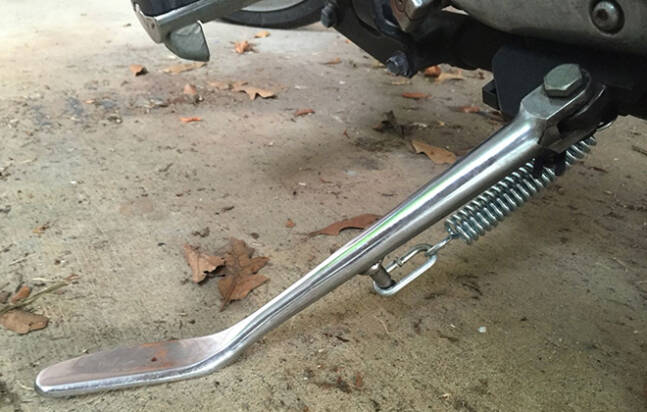
Your Kickstand Spring
The only time you’re ever going to think to check your kickstand spring is if you’ve ever had one snap on you in the middle of nowhere. So, let me save you the learning experience.
Unknowingly losing a kickstand spring on the interstate somewhere is a great way to accidentally underestimate the weight of your bike at the next gas stop and drop it. Kickstand springs are cheap insurance policies to help ensure you always get to where your bike is going and you keep the shiny side up. Be sure to have an extra one in your tool roll.
Your Clutch and Throttle Cables
There is no single piece of maintenance that you can do on your bike that’ll make you fall in love with it all over again more than lubing your clutch and throttle cables. Seriously. It’s actually crazy how much giving these two little things just a teeny, tiny bit of love can change the way your motorcycle rides.
You can service your cables without removing them from the bike and it’s also a great time for you to check your clutch to make sure it’s adjusted within spec. You can also check to make sure these cables aren’t frayed or worn out.
Your Brakes
When I say “brakes,” I don’t just mean your pads; I mean your master cylinder/s, your brake fluid levels, etc.
You don’t have to go wild here. Give ‘em a good squeeze and stomp before you leave the driveway and make sure that they’re stopping you properly. That’s about all you need.




